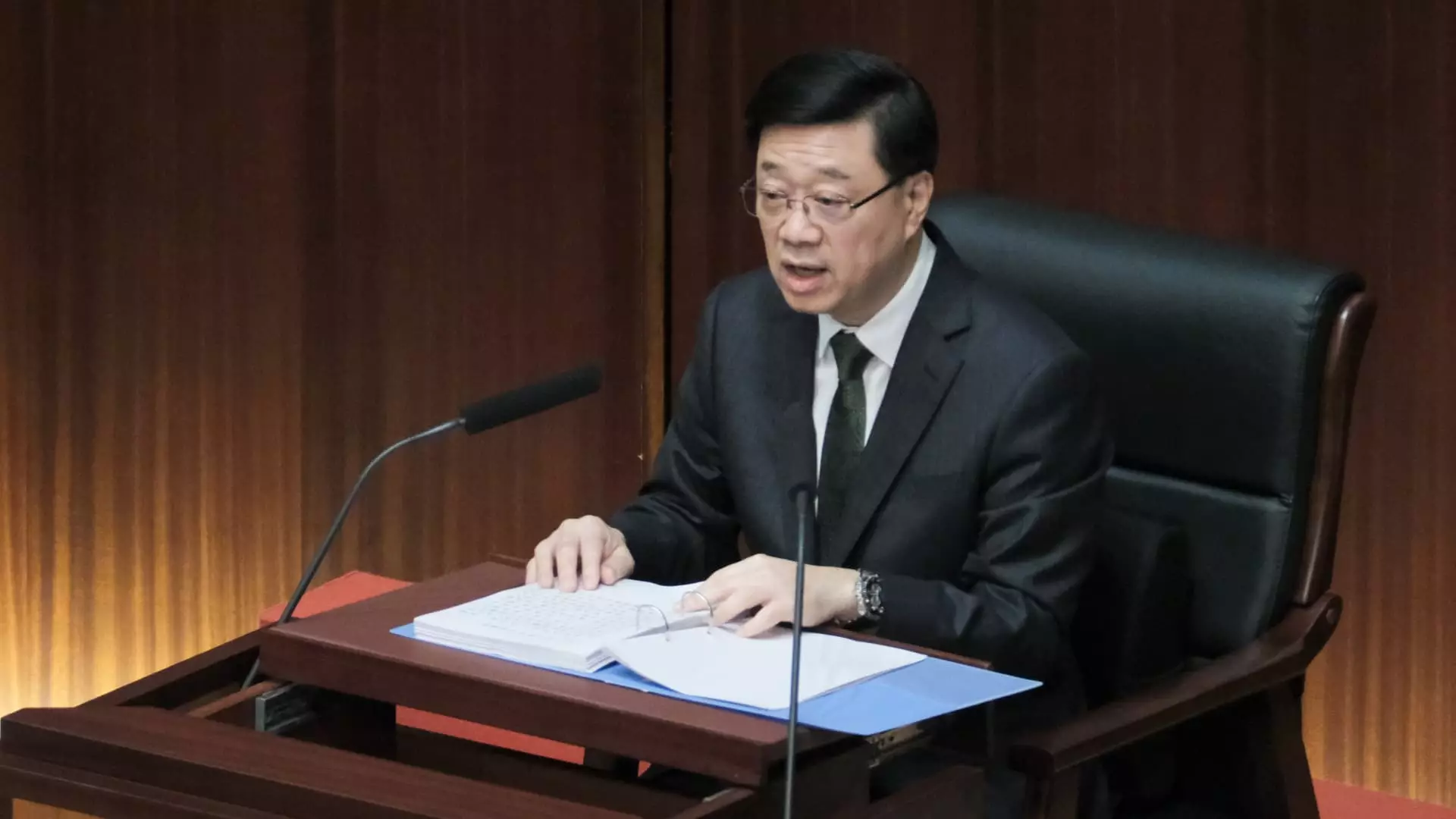The pressing issue of housing affordability has become a defining challenge for the government of Hong Kong, a densely populated metropolis where the reality of real estate prices seems increasingly dire. In response to this chronic crisis, Chief Executive John Lee’s recent policy address revealed a series of initiatives designed to alleviate the housing pressures felt predominantly by the younger population of the city. His acknowledgment of housing affordability as an “issue of great public concern” signifies a shift in governmental focus toward addressing the needs of citizens rather than merely maintaining public order or managing external crises.
The newly introduced policies specifically targeting individuals under 40 outline significant changes in the subsidized housing landscape. As the Hong Kong Housing Authority proposes to offer an extra ballot number to younger applicants in the Home Ownership Scheme, the measure aims to improve their chances of securing housing in a city where the competition is fierce. This is vital, as many youths have reported an inclination to reject job promotions or salary increases to maintain eligibility for public housing rather than entering an expensive private rental market. The extension of the White Form Secondary Market Scheme further reflects an understanding of the necessity to balance the available real estate with young adults’ aspirations for independence and home ownership.
Moreover, these initiatives show a tailored approach — an acknowledgment that the youth demographic, which has often been marginalized in housing discussions, requires targeted solutions. By reserving a quota of 1,500 flats specifically for applicants under 40, the government is sending a message that it values the contribution and plight of younger generations, which is a welcome change from previous policies that have appeared more generalized and less responsive to specific age-related hurdles.
One of the pressing issues in Hong Kong’s housing market is the existence of “shoe-box” subdivided flats, notorious for their poor living conditions and safety concerns. These units have become emblematic of the struggle for adequate housing within the city, with more than 100,000 such flats creating an uncomfortable backdrop to aspirants of quality living conditions. Lee’s introduction of a new system for renting these subdivided flats is a proactive step forward. By converting “substandard” units into designated “Basic Housing Units,” the government commits to improving living standards, with requirements for windows, toilets, and minimum size specifications.
This initiative not only aims to enhance the quality of living conditions for residents but also signifies a progressive acknowledgment of the humanitarian need for safe habitation. Health and safety ramifications cannot be overstated, particularly in densely populated urban areas where inadequate living spaces can easily result in considerable public health crises.
Amidst these strategies, the government’s commitment to ramping up the construction of public housing units is paramount. With projections of nearly 9,500 new units to be completed in the coming year—leading toward an ambitious goal of 30,000 units by 2027-2028—there lies hope for a significant reduction in the current wait time for public housing, which currently exists at an average of 5.5 years. Promising a reduction to 4.5 years by 2026-2027 is not just a number; it represents hope and a tangible change for countless families yearning for stability.
Lee’s address signifies a notable departure from previous focuses, which tended towards national security and recovery from past unrest, marking an innovative pivot towards promoting the welfare of everyday citizens. This renewed focus on livelihoods reflects a matured understanding of the social contract between the state and its citizens, acknowledging that economic stability is inherently linked to housing security.
Ultimately, John Lee’s policy address signifies a foundational shift in addressing Hong Kong’s housing crisis: a recognition that this issue palpably affects the fabric of society. The introduction of targeted initiatives for young people and commitments toward improving living conditions through basic housing represent meaningful advances in making housing more accessible. The path forward, although paved with challenges, appears brighter as the government’s strategies evolve to meet the needs of its residents. Moving forward, the real test will be the successful implementation of these policies, monitored closely by a populace eager for change.

